table of contents:
* What is a wave upwelling pump?
* What is the role of a wave upwelling pump?
* About NPO Escott’s wave-type upwelling pump
* Latest videos and materials about wave-type upwelling pumps
* Monitor sales start catalog
* Related information and materials
* About upwelling areas = 50% of marine resources come from 0.1% of upwelling areas
* About the effects of seabed cultivation (sea fertilization)
* About the problems caused by rising sea surface temperatures and the cooling effect
* Latest research on sea surface temperatures
* Test area: Sea surface at Katsuura Undersea Observation Tower:
Comparison of 8m depth
* Estimated upwelling water volume and calculation formula
* Regarding suppression of water vapor supply
* Mechanism to utilize typhoon energy
* Aerobic decomposition of sludge = methane, suppression of blue tide
* Aerobic decomposition of organic matter that accumulates in depressions on the seabed after dredging to produce methane and hydrogen sulfide Prevention of occurrence
* Overseas examples
* Summary
Recruitment of development project participants
List of current supporters
What is a wave upwelling pump?
A wave-type upwelling pump is an artificial upwelling device that uses the up-and-down motion of waves to pump up seawater (or freshwater) mainly from low levels.
* What is upwelling? (Source: Wikipedia)

What is the role of a wave upwelling pump?
It lifts nutrients from the lower layers to the sea surface, helping phytoplankton to proliferate and activating fisheries resources in upwelling areas.
At the same time, it is also expected to have the effect of suppressing the amount of water vapor by diffusing low-level cold water from spring to autumn near the sea surface.
Implementation test at Ishinomaki City Scallop Farm: Total length approximately 6m, lower part is VU150 tube

About NPO Escott’s upwelling pump
In 2019, we began developing a wave-type upwelling pump using a check valve.
Features include:
(1) Zero energy/Small wave compatibility: Driven only by wave power, it can pump up enough low-level water even in small waves from inland seas, lakes, etc.
② High strength and durability: The experience gained from previous offshore tests is utilized.
③Economy and versatility: The upwelling pipe is made of PVC pipe (second-hand products available) and can be obtained anywhere in the country.
④DIY compatible: People in the fishing industry can create, install, and repair the system themselves.
⑤Low cost: It can be purchased for 100,000 yen (1 set), and a certain number can be used as a fishing reef.
Structure and upwelling mechanism
It consists of a buoy (floating body) floating on the water surface and a pipe with a check valve suspended below it.
When the buoy rises, the valve closes and the water in the upwelling pipe is pulled upwards.
When the buoy descends, the check valve opens to disperse the water inside to the surface.
When the buoy’s rising speed is large, the water inside the pipe has upward kinetic energy.
The amount of water pumped is proportional to the vertical displacement of the upwelling pipe and the wave period.

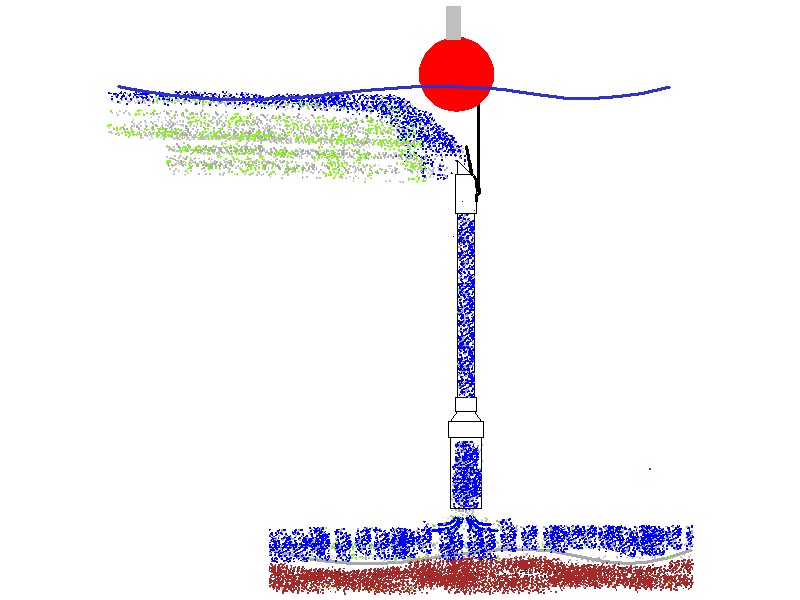
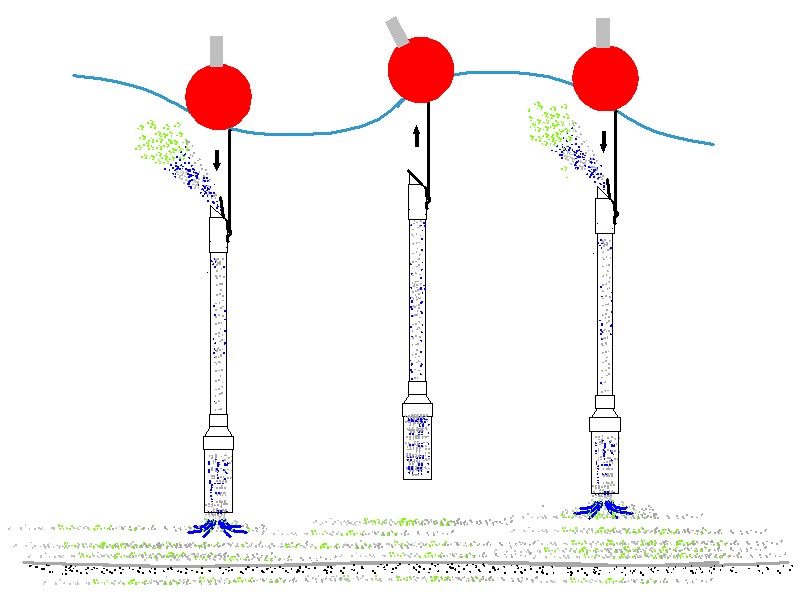
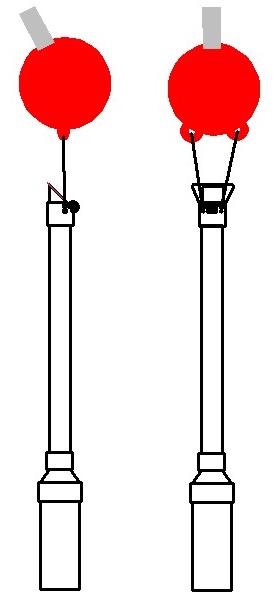

Latest videos and materials about wave upwelling pumps
1. Video: Climate change countermeasure mechanism of wave upwelling device ⇒Click here
2. Video: Wave-type upwelling pump explanation video ⇒Click here
3. Source: Latest information: Effect verification experiment results using wave-type upwelling pump
Monitor sales start catalog
Monitor sales start catalog
Catalog ⇒Click here
Related information and materials :
*About upwelling areas = 50% of fisheries resources come from upwelling areas of 0.1%
- Although upwelling areas are said to occupy only about 0.1% of the total ocean area, their biological production is by far the highest among all marine ecosystems, creating an extremely rich ecosystem. This is because the nutrient salts from the deep sea are brought to the ocean surface, which triggers the proliferation of phytoplankton, which are the ocean’s producers, and the number of organisms at higher trophic levels increases one after another. The upwelling area has become a good fishing ground, and it also benefits humans.
Source: Wikipedia
*About the effect of seabed cultivation (sea fertilization)
Effect-1: Increase in phytoplankton and activation of marine resources
Effect-2: Increase in phytoplankton captures CO2
Effect-3: Decomposition of sludge (sea areas with anaerobic organic matter deposits) is promoted, which helps prevent red tides and blue tides.
Effect-4: Leads to the suppression of methane generation (a greenhouse gas 25 times more effective than CO2) due to anaerobic decomposition.
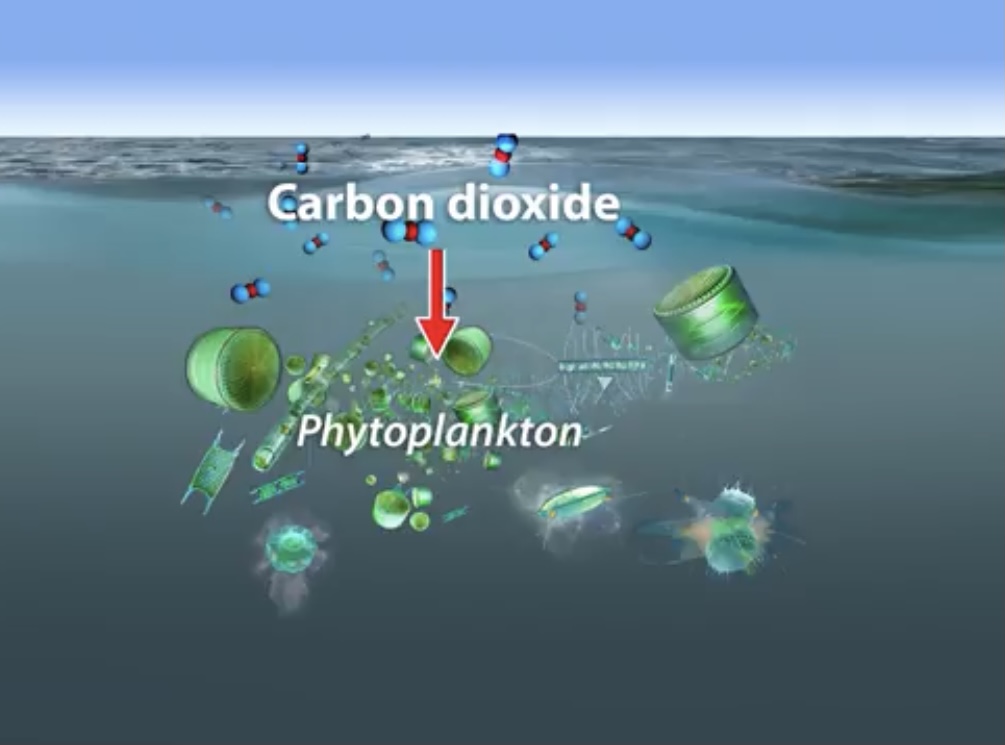
- Plankton increase and CO2 absorption
- Source: University of Hamburg
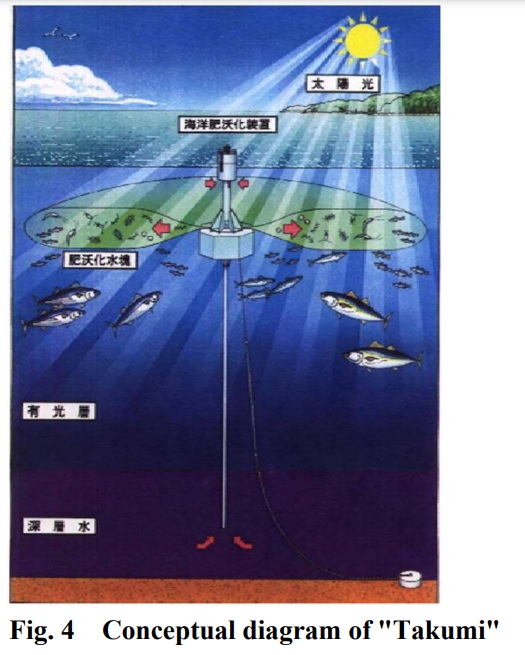
- Artificial upwelling and increase in fish populations, Takumi
- Source: Japan Society of Marine Engineering

- blue tide outbreak
- Source: PAKUTASO
* Regarding the issue of sea surface temperature rise and the cooling effect
As sea surface temperatures rise, the following impacts may occur:
① Weather fluctuations and changes in weather patterns:
Rising sea surface temperatures can affect weather patterns. For example, the intensity and frequency of hurricanes and typhoons may increase.
② Changes in ocean circulation:
Changes in sea surface temperature can also affect ocean circulation. Changes may also occur in ocean currents and climate around the world.
③ Impact on the ecosystem:
Marine ecosystems are sensitive to changes in sea surface temperature. Rising temperatures can affect the distribution, reproduction, and food availability of marine life. This can have serious effects on certain ecosystems, especially coral reefs and fish communities.
④ Melting of glaciers and ice sheets:
In extreme cases, rising sea surface temperatures due to global warming may accelerate the melting of glaciers and ice sheets. This could accelerate sea level rise and impact low-lying coastal areas.
⑤ Issues related to temperature rise:
Rise in sea surface temperature is also related to rise in temperature. This could lead to rising temperatures across the globe and an increase in weather events such as heat waves, droughts, and floods.
⑥ Decrease in the amount of oxygen and CO2 taken into the ocean from the air: This
may cause a decrease in the amount of dissolved oxygen in the ocean. This may reduce the amount of oxygen and CO2 absorbed in the ocean, leading to the death of fish and shellfish due to lack of oxygen and a decrease in phytoplankton.
These effects are interconnected and can lead to complex changes in the Earth’s climate system.
Possible effects of cooling sea surface temperature:
Effect-1: Restriction of water vapor supply
Effect-2: Suppression of typhoons, heavy rain, and heavy snow
Effect-3: Measures against heatstroke in coastal cities (heat absorption by low-level cold seawater)
Effect-4: Increased amount of dissolved oxygen and 2CO from the sea surface (measures against increase in plankton and death due to lack of oxygen)

- Japan Meteorological Agency HP

- Japan Meteorological Agency HP

- Source: TV Asahi News
- Massive fish die-off in the Gulf of Mexico
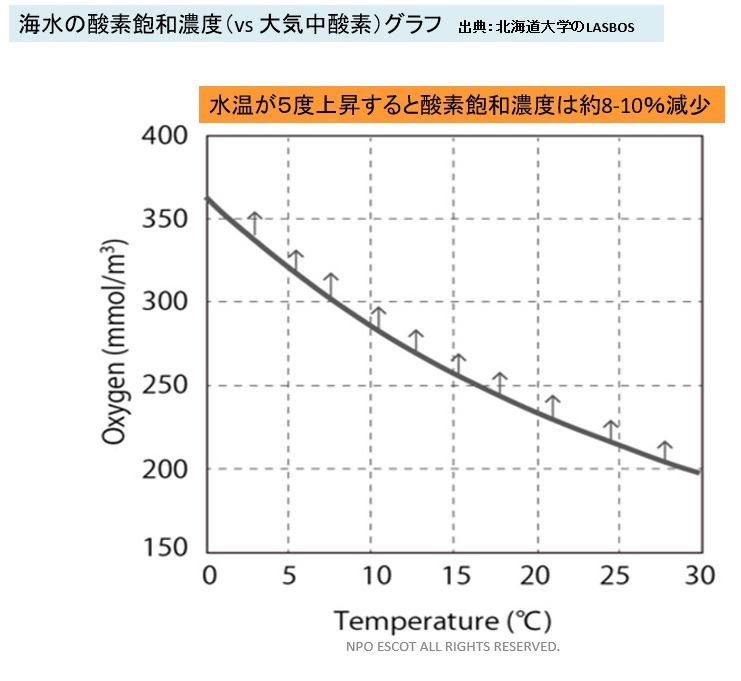
Water temperature and dissolved oxygen amount curve:
When the water temperature increases by 5℃, the amount of oxygen absorbed decreases by 8 to 10%.
*Latest survey results regarding sea surface temperature
In Katsuura City, Chiba Prefecture, the temperature rarely exceeds 30℃ even in summer due to ocean currents.
We compared the annual water temperature of the 8m-long distance at Katsuura’s Underwater Observation Park with sea surface temperature data from the Japan Meteorological Agency.
*There was an issue where the collection time of the Japan Meteorological Agency data was unclear.
- The average water temperature difference throughout the year was approximately 1.7°C, with sea surface temperatures being higher.
- Approximately 95% of the days occurred on days when the sea surface temperature was higher than the subsurface water temperature.
- Throughout the year, sea surface temperatures were on average more than 3 degrees Celsius in June, July, and August.
- The maximum vertical water temperature difference was 8℃. 2022.08.18
- The reason for the decrease in water temperature difference in September and October is thought to be the agitation caused by typhoons.
- The visibility is expected to be affected by plankton proliferation, which is low during periods of rising sea surface temperatures.

Test area:

Annual vertical water temperature change graph in Katsuura: Red = sea surface temperature, blue = water temperature 8m below the water surface

Water temperature difference graph: Maximum in August

Monthly average water temperature change: Shrinks in September and October due to typhoons
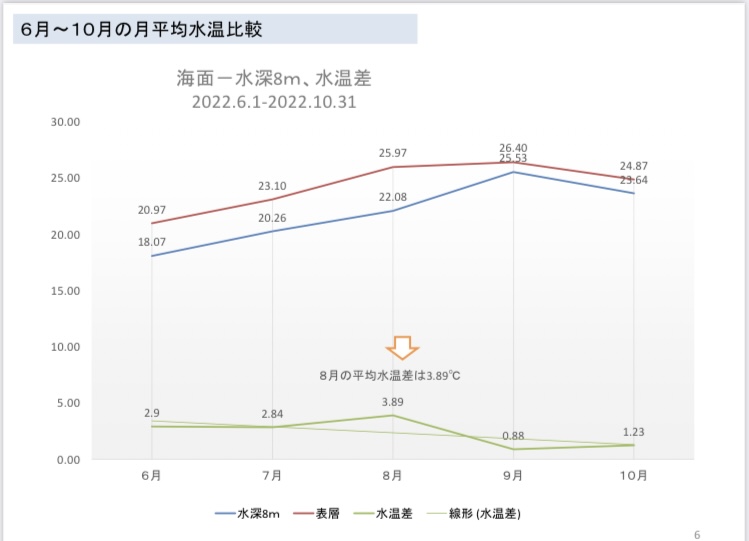
It is thought that the sea surface temperature was low from autumn to winter, which caused the diversion.

On a monthly average, January and February have the lowest water temperatures.

It is thought that plankton influences the relationship between transparency and water temperature.

Vertical water temperature data at the Katsuura Undersea Observation Tower: Collection of day and night time change data is a future issue.

I know from experience that the water suddenly becomes cold after diving just 2-3 meters deep.
At Escott, we measured the actual temperature difference using a temperature logger placed in a waterproof case.
It was found that on a sunny summer day, the surface water temperature is up to 3°C lower than the water temperature at a depth of 3m, and
one of the causes is thought to be a sudden rise in sea surface temperature due to direct sunlight.
Continuous measurement results of vertical water temperature at 15 minute intervals at 50 cm intervals

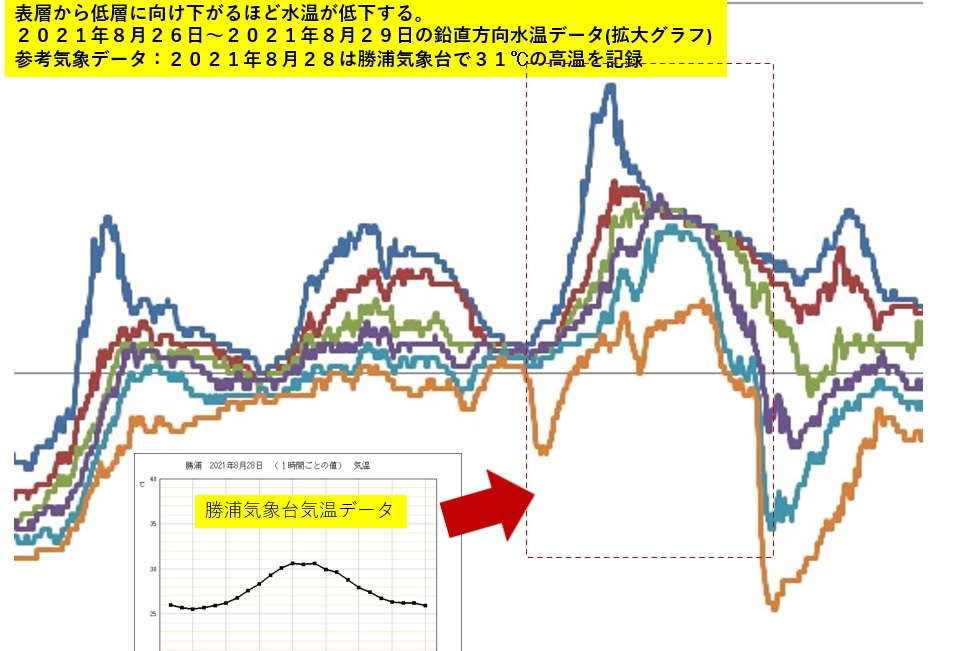
All-day measurements on September 10th showed that the surface layer of the ocean, down to a depth of 0.5 meters, absorbed almost half of the sun’s heat.
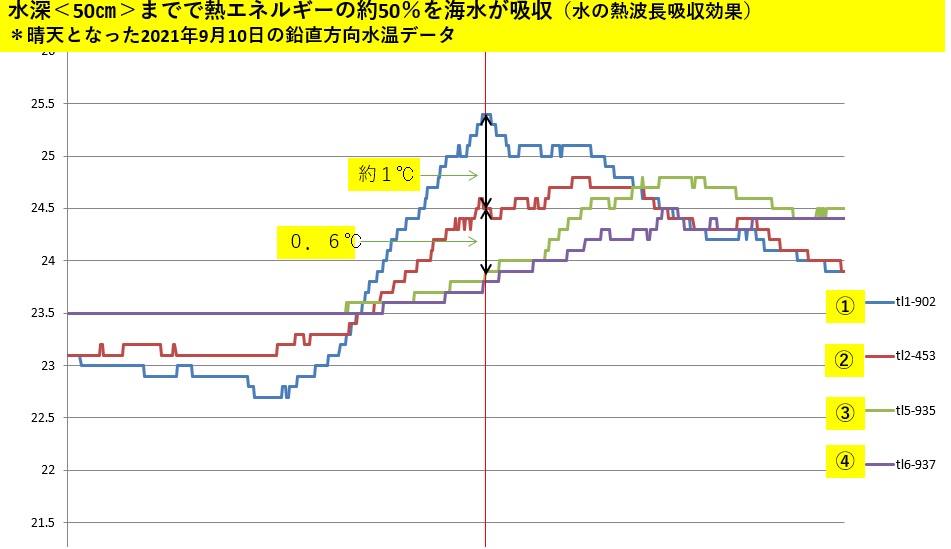
Super absorbs water’s heat
A 1 mm thick water layer absorbs almost all of the thermal wavelengths in sunlight that are 3 μm or larger.
In other words, it is assumed that a large amount of water vapor is generated from several centimeters below the surface of the ocean.
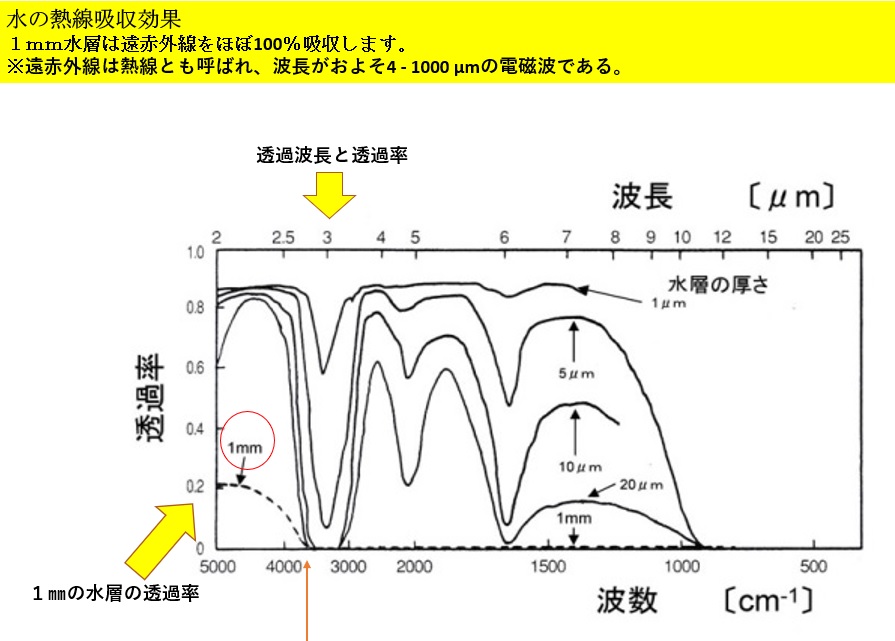
*Estimated upwelling water volume and calculation formula
If the wave period is 5 seconds, it will repeat the up and down movement 17,280 times a day.
If the displacement of the upwelling pipe is 50 cm and the diameter of the pipe is 20 cm, one wave will pump up about 15 liters of low-level water.
This means that approximately 270 tons of water will be drawn up per day. (Does not include water resistance loss)
If a typhoon occurs in the southern seas and swells of about 4 meters in height wash over the coast, the amount of upwelling would be approximately 8 times this amount, at 2,160 tons .
☆You can expect an automatic control effect that uses typhoon energy to promote vertical agitation and suppress water vapor generation.

- Artificial upwelling to increase fish resources using wave power
- Source: Griffith University Gold Coast, Australia
* Regarding water vapor supply control
If the sea surface temperature is lowered by 1°C, water vapor generation can be reduced by approximately 7%. (IPCC)

- Sea surface temperature on August 9, 2023
- Source: Japan Meteorological Agency website
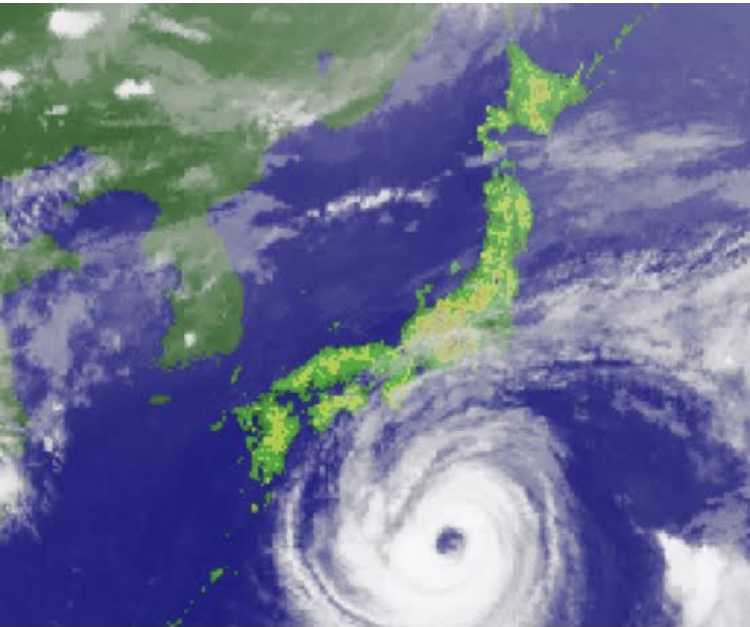

- Clouds and waves come from the sea to the coast. 2023.8.5
- Kamogawa City, Chiba Prefecture
*Mechanism that can utilize typhoon energy
①A typhoon occurs in the southern seas of Japan.
② Arrival of high waves/swells due to typhoon
③The wave-powered upwelling pump moves up and down significantly and begins to pull up low-level cold water.
④ Decrease in sea surface temperature in the installation area due to cold water diffusion/Diffusion of nutrients in the low layer
⑤ Suppressing typhoon development and changing course by suppressing water vapor supply
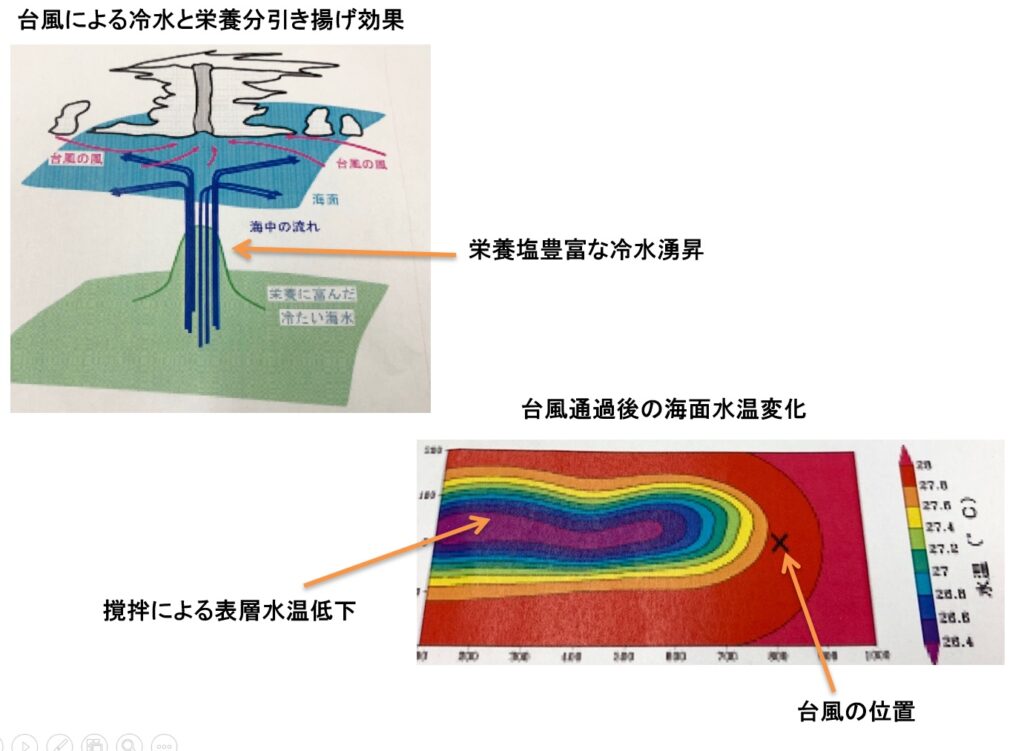
- Sea surface temperature drops as typhoon passes
- Seafloor nutrient redispersion
*Aerobic decomposition of sludge = Suppression of methane and blue tide generation
① Aerobic decomposition of organic matter in bottom mud little by little over 24 hours = water + CO2 generation
② Suppressing methane generation = reducing greenhouse effect to 1/25
③Increase in phytoplankton
④ Revitalization of coastal marine resources

*Aerobically decomposes organic matter that accumulates in depressions on the seabed after dredging, suppressing the generation of methane and hydrogen sulfide.

① Upwelling of low-lying sediments (sludge, etc.)
② Contact with oxygen at the sea surface
③Aerobic decomposition
④ Suppressing the occurrence of blue tides & increasing phytoplankton
*Blue tides are generated by winds from land and damage fish and shellfish.
*It decomposes in small quantities 24 hours a day, 365 days a year, such as in submarine depressions.
*Overseas cases
Experiment off the coast of Hawaii conducted by the University of Hawaii and the University of Oregon
: “Open ocean experiment of upwelling control using wave pump technology”
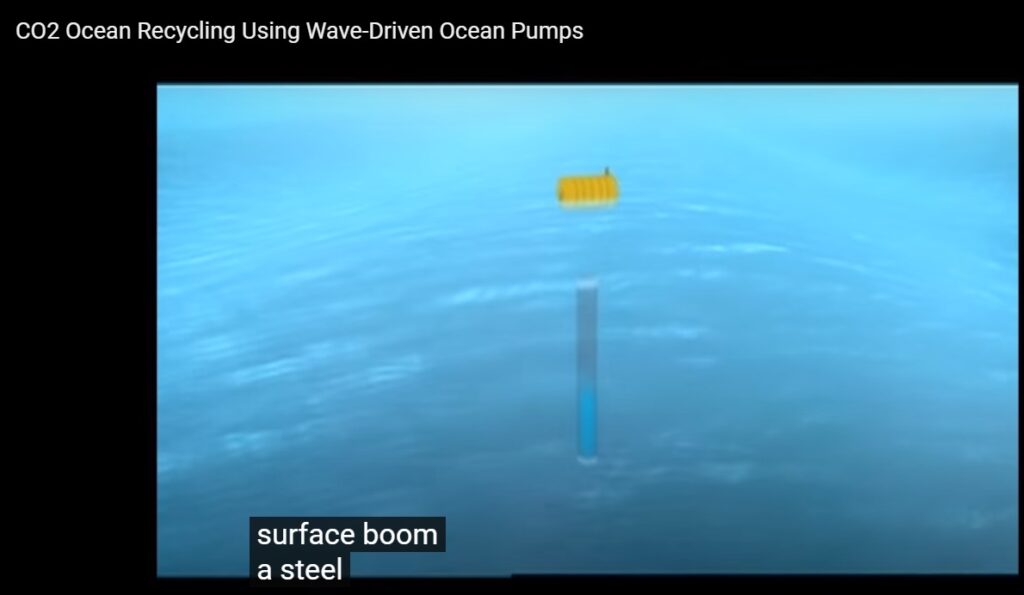
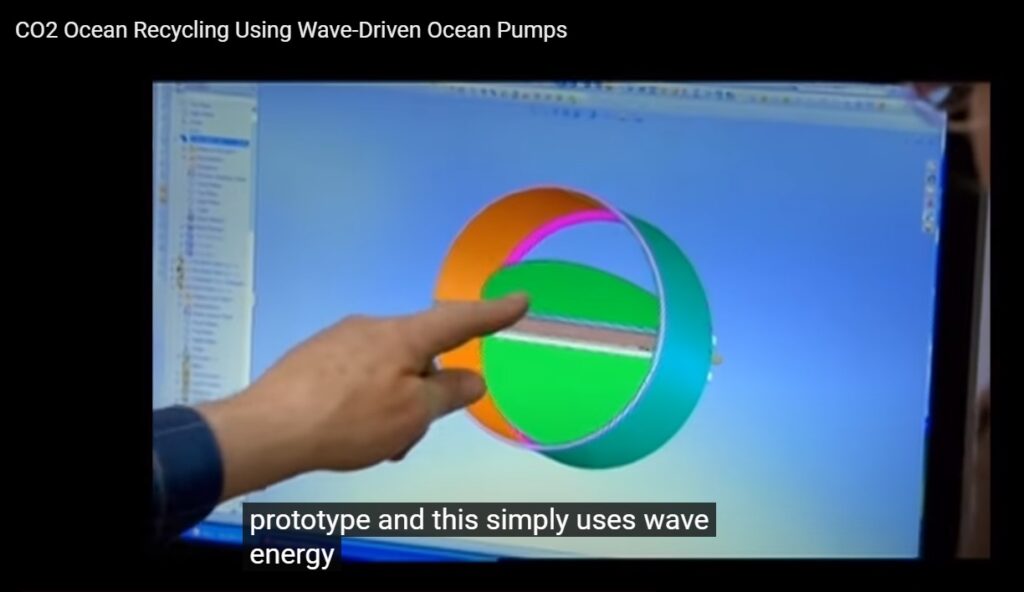
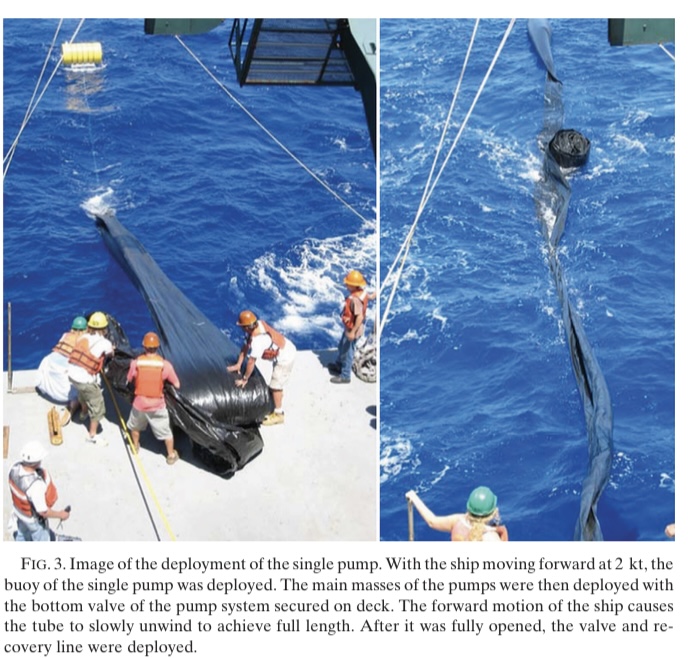
* summary
① Even small waves of a few centimeters can pump bottom water to the surface.
The demonstration tests that have been conducted overseas so far have been on large upwelling pumps.
Most of these devices had a check valve structure and required a large displacement for upwelling.
②By improving the valve body and float buoy
*Opens and closes with slight amplitude due to wide left and right non-uniform valves
*Using an elastic body to generate closing force (usually gravity type opening/closing)
*The diagonal cut at the tip reduces both fluid resistance and drainage resistance when rising.
*It has a lifting effect due to the buoy shape and unbalanced load.
③ DIY compatible by using general purpose products (low cost)
*Other than check valves, sewage pipes (VU pipes and fittings) available anywhere can be used.
*Old tires are used as the elastic body to assist opening and closing.
④Easy to introduce, move, repair, remove, and dispose of
*The upwelling pipe is a drain pipe made of PVC, so it can be obtained at low cost anywhere in the country.
*Reduction of separation work at the time of disposal by using a single material
⑤It has the effect of combining with Stommel’s principle of permanent trackside.
*The upwelling principle works even when the upwelling pipe is near the water surface where the water temperature is high and there are no waves.
Recruitment of development project participants
With climate change, the frequency of typhoons, heavy rain, and heavy snow is expected to increase.
Typhoons are known to rapidly intensify when sea surface temperatures rise above 26.5℃.
The characteristic of wave-type upwelling pumps is that the larger the waves (amplitude), the more water can be pumped up from low-lying water.
The amount of upwelling increases dramatically when the swell from a typhoon that originates in the southern ocean arrives. (Wave response effect)
This is thought to lower the surrounding sea surface temperature and control the development.
In addition, during normal times, the sea is plowed, increasing plankton, absorbing CO2, and activating marine resources.
NPO Escott is looking for project participants from individuals, companies, and organizations!
Project details here
Materials for project participating companies, organizations, and individuals
*Examples/papers
Test on scallop farming raft in Ishinomaki City, Miyagi Prefecture
paper
Shibaura Institute of Technology student thesis
Papers-1
Papers-2
Papers-3
Papers-4
Papers-5
Papers-6
Overseas university essay (Japanese translation)
Griffith University, Australia
“Artificial upwelling to enhance fish stocks through artificial upwelling using wave power”
Brian Kirke*
School of Engineering, Griffith University Gold Coast Campus, PMB 50, Gold Coast Mail Centre,
University of Hawaii, University of Oregon
“Open ocean experiments using wave pump technology to control upwelling”
ANGELICQUE WHITE
Department of Marine and Atmospheric Sciences, Oregon State University, Corvallis, Oregon
KARINBJO¨RKMAN and ERICGRABOWSKI
Ocean Earth, University of Hawaii at Manoa, Honolulu, Hawaii Faculty of Science and Technology
RICARDO LETELIER Department
of Marine and Atmospheric Sciences, Oregon State University, Corvallis, Oregon
STEVE POULOS, BLAKE WATKINS, and DAVID KARL
Department of Marine and Earth Science and Technology, University of Hawaii at Manoa, Honolulu, Hawaii
Papers from companies and research institutions
Miyagi Prefectural Fisheries Experiment Station:
“Research on improving the production of cultured oysters by generating upwelling using natural energy”
Akira Kumagai and Akio Oshino
“Ocean Fertilization Experiment by Pumping Deep Water”
–
THE SEA FERTILIZATION EXPERIMENT BY UPWELLING
DEEP OCEAN WATER -Kazuyuki Ouchi OUCHI
Shiozawa,Karuizawa-cho, Nagano Prefecture, 389-0001) Konomura C-11)Ph.D., Ouchi Ocean Consultant, Inc.
List of research and development supporters
Funds for research activities are made possible through the financial support of the following members.
8 supporting members:
Support amount: 5,000 yen/month
Kyodo Freighters
Shift Service Co., Ltd.
Yoshida Transport Co., Ltd.
Suzuyo Jidosha Transport Co., Ltd.
Hisawa Warehouse Co., Ltd. Yamaraku
Transport Co., Ltd.
Aobara Transport Co.,
Ltd. Maruyama Transport Co., Ltd.
Regular member 41 companies:
Support amount: 1,000 yen/month
Tanita Co.,
Ltd. Japan Management Association Research Institute
Japan Freightliner Co., Ltd.
Japan Freight Railway Co.,
Ltd. Sirius Consulting Co.
, Ltd. Hayakawa Maritime Transport Co., Ltd.
Gunma Jikahi Transport Co., Ltd.
Koriyama Truck Center Business Cooperative
Tokyo Boeki Transportation Co., Ltd.
Prandor Co.,
Ltd. APT
Eishin Transportation Co., Ltd.
Yoshida Transportation Co., Ltd.
Yamaniya Logistics Service Co., Ltd.
Otake Transportation Co., Ltd.
Yashio Transportation Co., Ltd.
Hoyu Service Co., Ltd.
Ibaraki Prefecture Transportation Business Cooperative Association
Sano City Hall
U-Palette (Digire Company) EF
International Kanto
Service Co.,
Ltd. Tradeshift Japan Co., Ltd.
Atom Logistics Co., Ltd. Noshiro
Transport Co., Ltd. Try
Wall Japan Co., Ltd.
Shirai Eco Center Co., Ltd.
Eco Planning
Co., Ltd. TAXT
Co., Ltd. Lockit Global
Kowa Transport Co., Ltd.
Tatsumi Transport Co.,
Ltd. OLC Logistics (Japan) Co., Ltd.
Masashi Kamio (Logistics Advisor)
Gikogyo Minato
Research Foundation
Japan Transcity Co., Ltd.
TRADE TECH JAPAN LLC.
Fujimoto Takeshi (Doctor)
Syncyanx LLC
Japan Technology Co., Ltd.
Oparts Co., Ltd.
Marubeni Logistics Co., Ltd.
NPO Escott is looking for people to work with us!
New member benefits
① Matching support in the fields of total energy, energy saving, environmental conservation, and logistics reform:
We support a wide variety of matching in the real network of over 5,000 locations.
② Consulting:
You can receive advice using accumulated natural science, logistics, and humanities data.
③ Participation in product/service/system development:
You can participate in projects such as research and development and new plans.
④ Real interaction:
You can participate in human resources exchange meetings held almost every month at a member price.
Value creation is possible based on the above achievements.
Escott NPO
4-17 Higashijomachi, Kashiwa City,
Chiba Prefecture 277-0011 768-22 Kamifuse, Onjuku-cho, Isumi-gun, Chiba
Tel: +81-4-7166-4151
Mobil: +81-80-4365-0861
Fax: + 81-4-7166-4128
https://www.npo-escot.org
ser.kashiwa@gmail.com
*If you would like the latest information, please contact us below.